Virtual Reality: A game changer in language acquisition
Shreya Joshi Staff Writer
For many Canadian immigrants, language is a major barrier in one’s ability to culturally integrate into society. In Canada, a degree of English fluency is necessary for work, social interaction, and financial management. Immigrants typically learn the language of their host country through “learning by doing” or engaging in typical social activities such as ordering a meal, phone conversations, and shopping.
At U of T, a three-year project spearheaded by Rayan Batlouini, a project manager at the Syrian Canadian Foundation, aims to utilize virtual reality (VR) technology to aid immigrants in learning English as a second language. With a $515,000 budget from the Ministry of Immigration, Refugees and Citizenship Canada, the project was implemented by the Syrian Canadian Foundation alongside the Department of Language Studies at the University of Toronto Mississauga (UTM). >> VIRTUAL REALITY continues on page 06
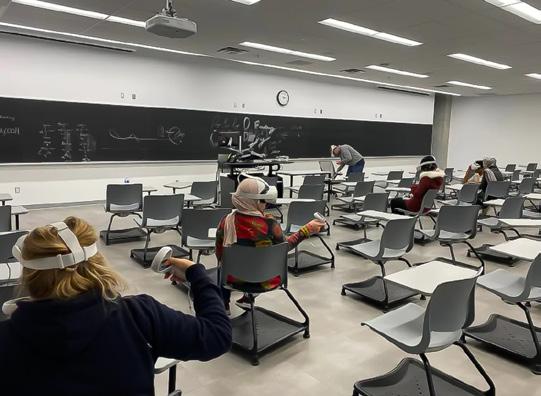
Zero Hour:
The Taliban continues its crackdown on human rights
Mihail Cubata Associate News Editor
On February 19, 2020, under the Trump administration, the United States signed a deal with the Taliban that promised a complete US withdrawal from Afghanistan. When Joe Biden became president less than a year later, he chose to go ahead with the plan, although delaying it to the end of August 2021. Biden denied rumors that US intelligence indicated that the Afghan government would collapse on its own and downplayed the Taliban’s loudly stated plans to impose an “Islamic government” after the US left. On August 15, 2021, Taliban forces entered Kabul and stormed the presidential palace.
In the first month of the Taliban’s new rule press releases and social media posts rebranded the Taliban as young, progressive freedom fighters that sought to establish a moderate and inclusive government. In a press conference held August 17, 2021, Taliban spokesman Zabihullah Mujahid promised a commitment to women’s rights and that men and women would work “shoulder to shoulder.” He also promised amnesty for Afghan citizens who fled the country due to the Taliban takeover.
Less than a month later, reports of human rights violations began to surface. Women protesting the Taliban’s all-male government were whipped and journalists witnessing the event beaten. Former members of the nowdefunct Afghan army, government, and intelligence service were hunted down and killed. The families of Taliban targets were also harassed and threatened.
The Taliban’s public relations and governance strategy soon shifted to what it is today: a message of intimidation
and control. “The need for gentle persuasion has been replaced by a need for unquestioned subjugation to Taliban authority,” writes Tanya Goudsouzian, a journalist who has reported on Afghanistan for more than fifteen years. “The message of liberation and inclusiveness during the struggle is irrelevant and the fundamental need to consolidate power is the new objective.”
In June 2022, the United Nations published a report detailing a myriad of human rights offenses committed by the Taliban since they took power. Observer teams tallied up 160 extrajudicial killings of former Afghan soldiers and government officials, 178 unlawful arrests, and 56 cases of torture. Other groups, including journalists and human rights defenders, also suffered arrests, violence, and harassment.
The report put special emphasis on the gradual “erosion” of women’s rights under the Taliban regime. This began in September 2021, when the Taliban issued a dress code for female university students and teachers, requiring them to wear “an Islamic abaya robe and niqab that covers the hair, body, and most of the face.”
In March 2022, the Taliban closed girls’ secondary schools hours after they were first reopened. And in May 2022, the Taliban decreed that women would be expected to stay home the majority of the time, with any trip outside requiring them to wear clothing that completely covered their body.
The latest restrictions came in December of 2022, with the Taliban banning women from universities, religious classes, and from working in non-governmental groups. The bans triggered organized protests from women in Kabul and other major cities.
LOVE AFFAIRS
FOR WOMEN
“A FAMILY PORTRAIT”
>>
“ARACHNE”
>>
The Independent Student Newspaper of the University of To ro nto Mississauga since 1974 themedium.ca Issue 13 Volume 49 January 9 2023 YOUR STORY, OUR PAGES COMPETITION WINNERS ON PAGES 2-5 NEWS
NEWS
>> ZERO HOUR continues on page 07
COMPETITION WINNERS
RAYAN BATLOUNI/UTM
I would stop to watch his blood-orange afro floating at his desk, a cloud of fire over a fluorescent sea, waiting.
read
>>
more on page 02
Jonathan
Divine Angubua
Well tell those goddamn/supreme court spineless pricks/to keep their clean fingernails/out of my uterus I mean seriously
read more on page 03
>>
Grace Elizabeth Otto
“family portrait” of ducklings Adam was lucky enough to photograph huddled together last spring are wood ducks.
This
read more
page 04
on
Adam
Hicken
has enjoyed learning about Greek mythology since she was a child, and the story of Arachne has always been her favourite.
Lavleen
read
more on page 05
Bhachu
Lavleen
Love Affairs
Divine Angubua – Fiction Winner

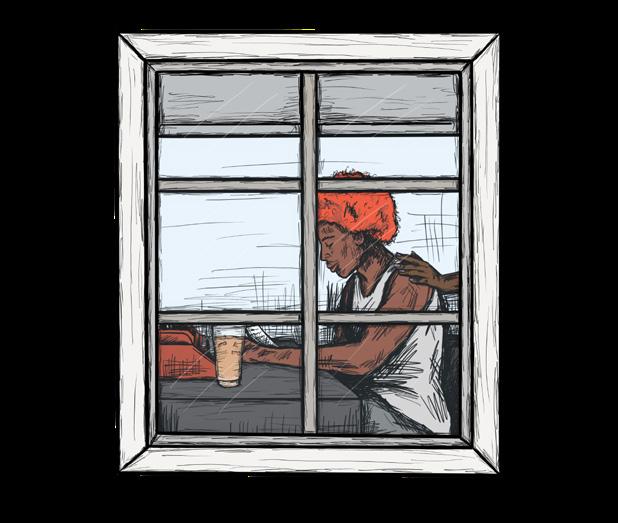
Testimony
My god, I know that boy. Well. He really did seem like the type to put himself in this kind of situation, and I guess that’s why I never cared for a friendship. And to think that the girl is. Dead now. Ugh, men suck.
He lived two doors down from me and as the acrid autumnal death knell blew through the campus, I started to notice his window on nights when he was busy at his typewriter, when I would make the treacherous journey from the library to our round arrangement of townhouses with crescendos of frantic violins coursing through my ears. I would stop to watch his blood-orange afro floating at his desk, a cloud of fire over a fluorescent sea, waiting. Sometimes, she was there with him.
A lover of bitter coffee and bitter truths. Camus. Wallace. Updike. Przybyszewska. I wonder. What kind of parent misraises a child to freely quote Lolita, wear tank tops to class in the winter, and order iced blonde americanos past five p.m.? I once watched him argue in a politics tutorial—much to the outrage of the class—that if the Arab world really cared about solving the Israeli-Palestinian conflict and not killing Jews, they would have absorbed Palestine into one of their countries a long time ago. It’s like kicking a homeless man off the park bench he’s sleeping on. Just go find another bench, the park is full of them!
Given what we know now, it’s probably fitting that he killed himself.

The Master—October 31, Halloween
Clumps of pomegranate seeds fall into the red cave of her mouth. Music pumps out of a speaker. She lingers around the table’s talk. Her fingers bleed with juice. She is a cat, and I am a pirate. The fruit reminds me of my mother, she says when I ask why she chose it. Some people believe that pomegranate is the true apple of Eve, I tell her. She laughs. Good to know that she actually had good taste, she says, flashing her white teeth. I recall the soft earth of her body in my arms on the night of the university’s Black Students’ winter formal. Why do you look like you’re about to cry, she asks. Would she understand if I told her that a grieving face is one that is also lost in worship? She is Prosperina, breaking fast in Pluto’s underworld prison, and I fumble at her spirit like a mathematician in thrall of an impossible equation. I sit before her, my soul naked and small. She holds me in her hand and breaks me open, sucking on my seeds sweetly before spitting them out.
Testimony
A suicide pact? Are you mad? They’re saying that it was some kind of erotic fatality, but we all know they’re just covering it up because his father sits on the board of directors. He probably raped her and did himself in when he realized there was no escaping what he had done. Just look at him. The signs were always there.
I hear they found a diary.
Did you hear that in one creative non-fiction class, he wrote about how he sometimes wanted to fuck his high school librarian because she wore the same earrings as his
mother? That poor girl was way out of his league. A girl who worked hard to intern at the Supreme Court over the summer should have nothing to do with a boy who couldn’t pass a single class, trying to cosplay Hemingway from the safety of his father’s bank account. But I guess there’s nothing enough money can’t buy.
The Sea, The Moon—December



She soars above me, a mother in the air, reaching for the sun as little Icarus strains to stay afloat. The sun sets into Capricorn, the season of my birth, and we baptize each other in sex. She leads protests against a professor accused of sexual harassment, covering the door to his lab in red tape and warnings in blood. The politics department gives her an award for academic excellence. She has dinner with the prime minister because she loves this country. I receive rejection after rejection; the university newspaper publishes my essays as cruelly edited, gruesomely compromised versions of themselves; I catch a cold that chains me to my bed. She visits me and tells me to keep trying. Blonde braids crash like waves across her dark back as we fuck on the night of a full moon and creation feels complete. I obediently follow her dark eye, me her cold egg as she sits on my chest, and I siphon life from her breast. Mars is retrograde in Gemini, she whispers as we lie in bed on clouds of mushroom. Mars was in Gemini when America bombed Hiroshima and Nagasaki, did you know? A pair of cities, a pair of bombings, how romantic, don’t you think?
Consecration, Love’s Humility—Happy New Year


We are in my room, and she reads a collection of Emily Dickinson’s love poems as I write at my desk. She mutters lines aloud, leaving them in the air to hang and dry. I, the undivine abode of his elect content, proud of the pain I did not feel till thee. Lately, she has been tired of her life, irreverent towards her work; her mother is sick, and she might have to leave school and take care of her. She talks about freedom as if we do not live in the best country in the world. I don’t know, I say, it sounds like she likes to be hurt. Hmm, I understand that, she says. I think that there are sacraments love demands of us, ways to feel full. But it’s sad, I say. Sadness, fullness, they’re all the same thing. Her eyes shine with oil. She is a sculptor’s mould lit from within, burning. It isn’t despair, this sadness. It is love. It is love.

02 Your Story, Our Pages Competition
Jonathan
For Women
Grace Elizabeth Otto – Non-Fiction Winner
Well tell those goddamn supreme court spineless pricks to keep their clean fingernails out of my uterus I mean seriously I think they forgot what century we are in or perhaps they are trying to build their own new not-women century a neo sort of one I think where they want their shiny brand of freedom but not for women and not for me and when I defend my rights as a woman being I am given crossed arms and armed threats about my pyre stakes for stating my woman opinion against the skeletons in the supreme court closet on Twitter which was bought by the not-woman whose face looks like the not-she sucked a lemon dry before the not-she dumped 44 billion dollars into a website before Planned Parenthood or my women’s rights and underneath that sea of boiling threats there’s another 20 replies about Jesus and God and how Jesus with a sword or a snake or the barrel of a shotgun to my face that has more rights than me is going to avenge all of those fertilized eggs I have mercilessly slaughtered well guess what my women are being slaughtered in the streets for being women beings so where are my woman rights you best keep your not-she God and your skeleton hands out of my uterus.
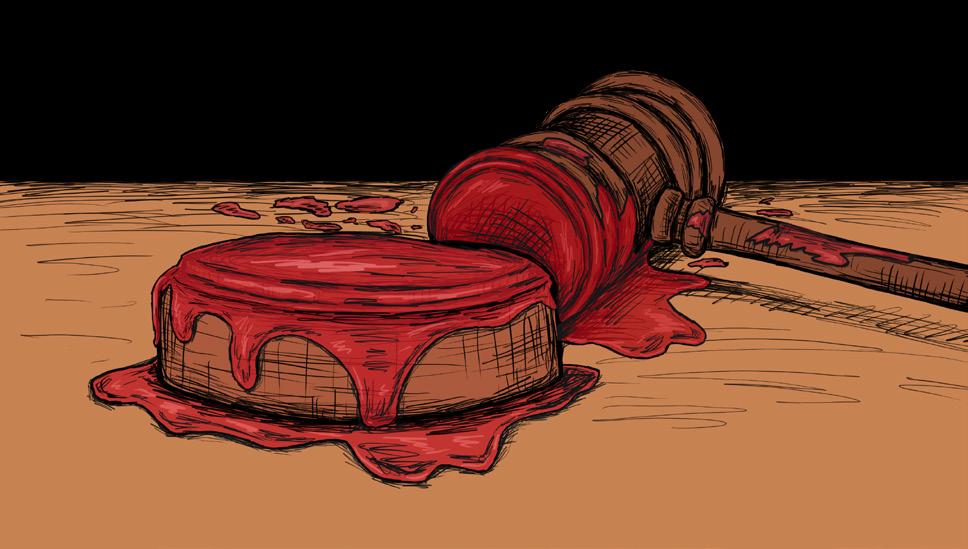
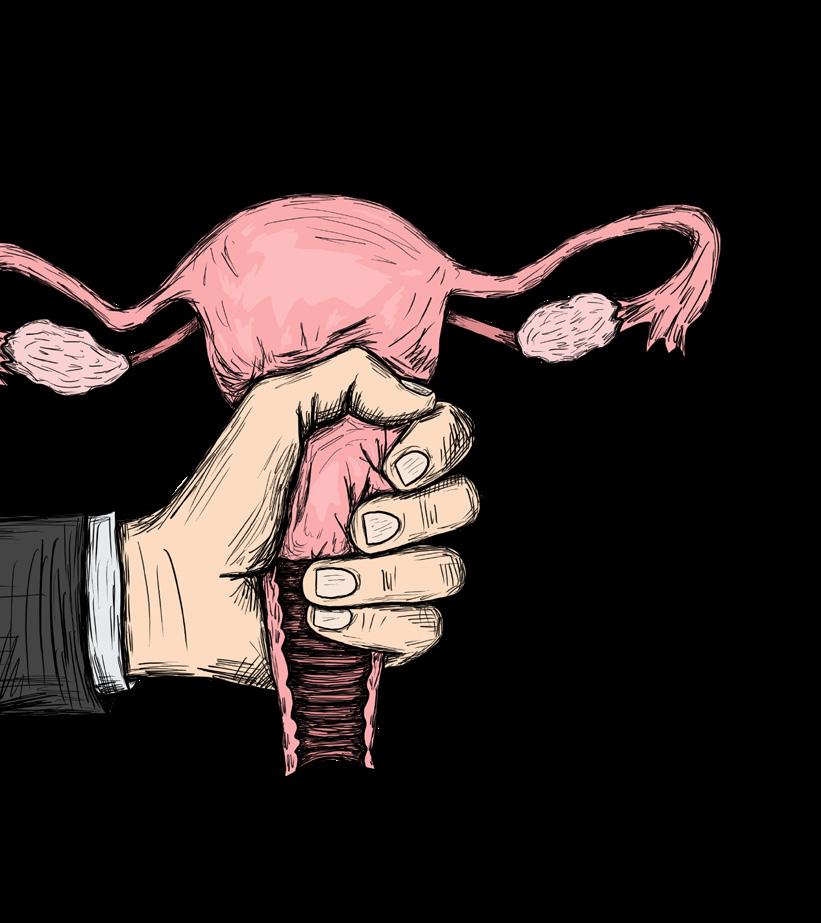
03 Your Story, Our Pages Competition
Through his time as a scout, and studying environmental science, Adam Hicken developed a deep fascination and appreciation for the natural world. Adam has found that if you take some time to learn about any species, you will be amazed with what you find. Adam loves wildlife photography because it allows him to share how incredible nature can be and to showcase its beauty.
This “family portrait” of ducklings Adam was lucky enough to photograph huddled together last spring are wood ducks. They get this name because they make their nests in tree cavities as high as 15 metres off the ground. Once the nest is ready, the female wood duck will lay up to 15 eggs, then she and her mate will stay to keep the ducklings warm for a month until they hatch. About one day after all the eggs have hatched, the parents
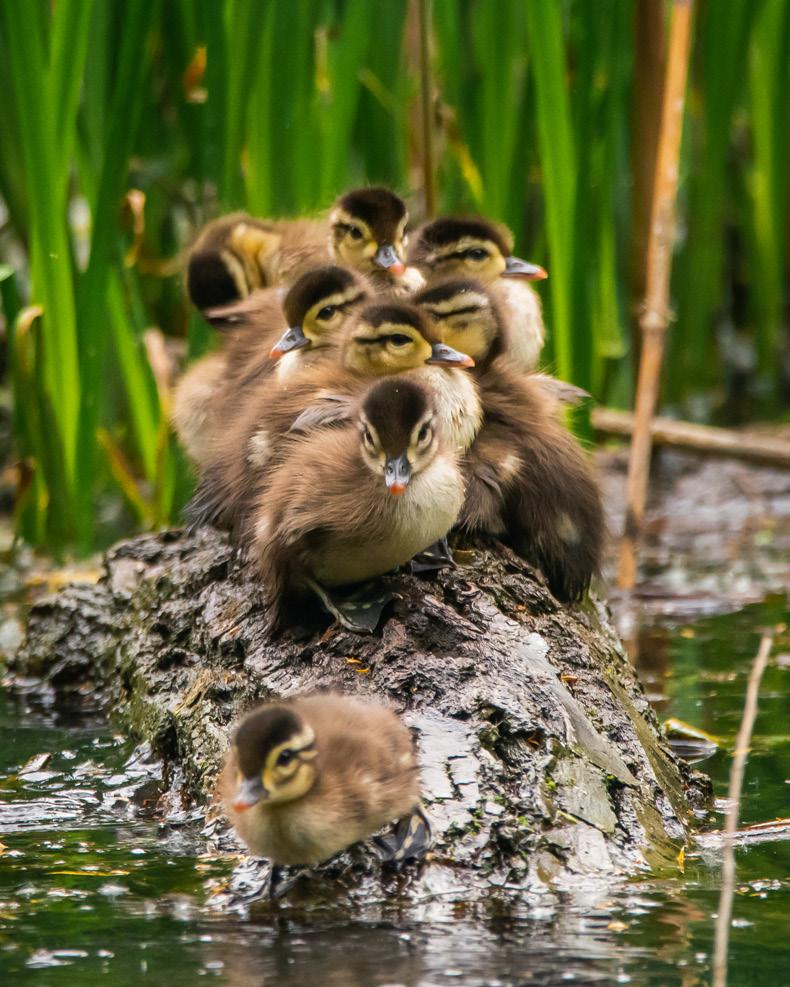
will fly out of the nest and call for their babies to follow. The ducklings hatch with long claws that they will use to climb up to the nest opening, where they can see their parents patiently waiting below.
These ducklings are too young to fly, so they must take a literal leap of faith, falling all the way to the forest floor or into a shallow swamp. Because the ducklings in this photograph are so small, the shot must have been taken only a few days after they hatched and made their daring jump. Upon landing, they will reunite with their parents and stay with them for safety and food until they are old enough to fly and begin their adult lives
Adam shares more of his wildlife photography on Instagram @flying.chicken.photos.
A Family Portrait Adam Hicken – Photography Winner Digital photography, 2022 04 Your Story, Our Pages Competition
Arachne
Lavleen Bhachu – Artwork Winner
Digital illustration, 2021

Lavleen Bhachu is a third-year mathematics major at UTM. She practices art in her spare time and does freelance commissions on Instagram. She mainly focuses on digital art, but also likes to sketch and paint occasionally. When painting digitally, she creates the illusion of brushstrokes and uneven lines with the help of special digital brushes, and this adds to the realism of the piece. Semi-realism is the most common form of digital painting that Lavleen likes to do, but it can be very time consuming. She loves bringing fictional characters to life, especially those from childhood media. Themes of nostalgia are very prominent in her works.
Arachne is inspired by the Greek myth of Arachne. Lavleen wanted to show her coming to life from a statue and gave her a mid-transformation from human to spider appearance. Lavleen has enjoyed learning about Greek mythology since she was a child, and the story of Arachne has always been her favourite since she is able to relate to the character in the sense that they are both artists. Arachne used her art to challenge the goddess Athena and make her voice heard, and in the same way, Lavleen uses her artwork to express herself to the world.
05 Your Story, Our Pages Competition
UN conference spearheads discussion of biodiversity loss and its solutions
The UN Biodiversity Conference culminated in the Kunming-Montreal Global Biodiversity Framework, which is comprised of four goals and 23 targets aimed to protect nature globally.
Renee Simran Kaur Mahal Contributor
From December 7 to 19, 2022, nation leaders came together for the UN Biodiversity Conference hosted in Montreal, discussing biodiversity loss and solutions to address it. During the two-week conference chaired by China, the Kunming-Montreal Global Biodiversity Framework (GBF) was created. The GBF includes four goals and 23 targets for participating countries to follow, all pertaining to climate action and nature protection.
The four goals, named Goal A, B, C, and D, focus on different aspects of maintaining biodiversity. Goal A aims to terminate of all human-caused species extinction by 2050 and maintain ecosystems and genetic diversity. Goal B reinforces the importance of sustainably using natural resources. Goal C goes over the fair and equitable sharing of any benefits netted from using genetic resources, as well its protection. Finally, Goal D ensures that the GBF is properly implemented in all participating countries by securing the resources necessary for developing countries to do so.

An important focus was on the finances necessary to protect biodiversity, leading to extensive conversation on how developing countries can be financially supported by more affluent countries. Representatives from a number of developing countries expressed their nation’s need for financial assistance to achieve the goals and targets set in the summit. To address these concerns, it was proposed that the GBF
ient local economies.”
Along with the four goals comprising the framework, the GBF also includes 23 more specific targets. These targets supplement the four goals and provide specific actions for participating countries to take. This ensures that cohesive outcomes are achieved by 2030. Notable targets include Target 7, which aims to address and reduce the effects of various kinds of pollution, and Target 22, which seeks to increase representative decision-making in regards to the environment—emphasizing the rights, cultures, and unique knowledge of Indigenous Peoples.
Target 22 is particularly applicable in Canada. At the conference, Stephen Guilbeault, the Canadian Minister of Environment and Climate Change, stated that Canada “strongly advocated for” the recognition of Indigenous rights within

the GBF, and will support “new Indigenous-led projects that will help us halting and reversing biodiversity loss and achieving 30 by 30 while advancing on the path of reconciliation.” Canada also entered into the Canada-Yukon Nature Agreement, which prioritizes guidance from Indigenous Peoples in conservation efforts in the Yukon Territory.
On an international scale, Canada signed a Memorandum of Understanding with Ukraine during the summit, reaffirming the countries’ intention to fight issues such as climate change and the loss of nature, together. Due to the ongoing war, Ukrainian agriculture, forests, water, and air have sustained rapid negative effects. This has prompted Canada to commit to “increasing important bilateral cooperation on biodiversity, air quality management, and mitigation and adaptation to climate change,” said Guilbeault.
For many, the GBF brings great hopes for future environmental success. As the summit’s host, Canada spearheads these expectations, as Guilbeault added that “In Montréal, we have risen to the challenge and united as one global community to address the crisis faced by nature. We agreed on an ambitious path forward for our planet, and have given ourselves the tools to turn the tide. This is a historic moment for nature, and it is our only chance to save what we love and hold dear, before it is too late.”
Virtual Reality: A game changer in language acquisition
UTM hosts a VR program to teach English as a second language to immigrants.
Shreya Joshi Staff Writer
>> VIRTUAL REALITY continued from page 01
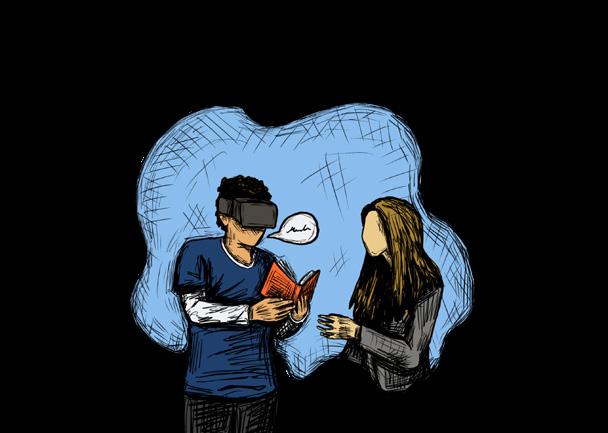
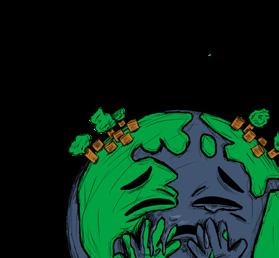
The program uses simulated environments that mimic realistic scenarios to help immigrants gain familiarity with, and confidence in, speaking English.
Over the fall term, the program ran for eight weeks, every Saturday on a weekly basis at the UTM campus. Students were divided into two classes, one using standard language learning (as the control group) and the other using VR. There were 24 students per class and 48 total. Over the course of three hours, teachers gave English lessons before students who used VR headsets to roleplay using the phrases they recently learned.
In December of 2022, CBC’s radio show, The Current, covered the program hosted at the
UTM. Speaking in the show, Batlouini stated that “it was very interesting to see students that are shy in regular classes talk much more whenever they are utilizing the VR headset.”
She noted that VR increases class participation for some students who are more reserved. Regardless, Batlouini contended that it is still a bit early to comment on the efficacy of the program in teaching language.
VR is beneficial to language learning as the immersive virtual environment creates a realistic experience where people can learn to interact and make decisions within society. Several businesses have taken interest in the financial investment and creation of language learning VR games. For instance, Mondly— an education technology company— recently released a VR game wherein players can practice their language skills through conversing with passengers on a train,
ordering meals at restaurants, and making hotel arrangements.
As baby boomers continue to leave the workforce, Canada’s economy is becoming more reliant upon its immigrant base. In November 2022, the federal government announced its plan to welcome more immigrants from 2023 to 2025, with a goal of 500,000 people for the final year. With the involvement of virtual reality games, more immigrants can learn English and enrich the Canadian economy.
However, there are still improvements that must be made to VR language learning. For instance, Mondly noted a range of issues, from technical problems to general conflicts regarding the learning curve of the technology involved. There are also issues with audio learning as speech recognition comes into play, and virtual reality headsets need further development. Overtime, as those issues become resolved, VR language education games can move past the niche market, becoming more accessible.
06 NEWS Editor | Larry Lau news@themedium.ca
Fund be created to better facilitate the sharing of monetary resources. During the summit, Canada committed $255 million to aiding developing countries in their pursuit of “fighting climate change, protecting nature and supporting resil-
NATALIE NG/THE MEDIUM
Fortnite creator faces class action lawsuit in Quebec
Danica D’Sa Contributor
Epic Games, the creator of the popular video game Fortnite, is facing a class action lawsuit in Canada. Plaintiffs are requesting for compensation due to game dependence and behavioural issues caused by Fortnite, as well as refunds of inapp purchases made by children under 18. This comes after Epic Games faced a penalty of US$520 million for privacy violations and for encouraging unintended purchases in the US in December 2021—stipulated in a Federal Trade Commission (FTC) news release.
“Epic put children and teens at risk through its lax privacy practices, and cost consumers millions in illegal charges through its use of dark patterns,” stated the director of FTC’s Bureau of Consumer Protection, Samuel Levine. The use of design tricks in Fortnite known as “dark patterns” and other unethical billing practices led to hundreds of millions of dollars spent on unintended purchases. In response, the company has made changes to improve child safety, as reported by CBC These changes include increased parental controls, as well as the implementation of “cabined” accounts, which restrict features of the game until a parent’s email address is provided.
In Canada, the class action lawsuit began with accusations of Fortnite causing behavioural issues among children. Three

parents in Quebec claimed their children showed symptoms of dependence after playing the game, displaying anger when restricted from playing. They also observed behavioural changes in their children, such as social withdrawal. This motion, filed by Calex Légal, heavily mirrors the 2015 civil suit brought against the Quebec tobacco industry, which claimed an intentional creation of an addictive product without explicit warning to consumers.
While the Superior Court does not agree that the harm from playing Fortnite was intentional, it states that Fortnite’s designers should have been aware of their game’s addictive properties. The class action also involves an examination of in-game purchases made by players under 18. The court declared that minors can be eligible for refunds of purchases.
In response to claims against Fortnite, lawyers representing Epic Games argued that there is lacking evidence on Fortnite causing video game dependence. Additionally, currently, Quebec does not recognize video game dependence as a mental condition. The lawyers also claimed that the American Psychiatric Association does not classify gaming addiction as a mental disorder. In response, the Supreme Court Judge, Justice Sylvain Lussier, contended that such issues can be argued based on integrity, and that the World Health Organization has declared gaming addiction as a disease. Likewise, Justice Lussier stated that the lack of recognition of gaming addiction in Quebec “does not make the claims in question ‘frivolous’ or ‘unfounded’.” The existing evidence, while not officialized into a diagnosis, still poses a cause for concern.
The authorization of the class action lawsuit in Quebec started an important legal battle, and with the popularity of Fortnite, the resolution of this lawsuit carries implications for the video game industry. Justice Lussier also noted, “The harmful effect of tobacco was not recognized or admitted overnight,” and this may ring true for video games as well.
: The Taliban continues
on human rights
 Larry Lau News Editor
Larry Lau News Editor
A return of in-person festivities in Mississauga
For 2022, Mississauga returned to in-person celebrations for both Christmas and New Year’s Eve. On November 26, 2022, the City of Mississauga held its Light Up the Square event, where visitors of Mississauga’s Celebration Square watched live performances and viewed four glowing art displays spread throughout the city square. The installations were available for viewing until January 1, 2023. On New Year’s Eve, celebrations were held at Celebration Square, where residents watched and danced alongside performances, skated in the outdoor rink, and observed fireworks as the clock struck midnight.
A cold and snowy Christmas gift from nature
In the days leading up to Christmas, frigid snowstorms blasted Ontario, with wind chills reaching -30 C. Although in spirit of a white Christmas, the snowstorm caused many issues—an unwelcomed holiday gift. On December 23, 2022, 39 per cent of flights were cancelled at the Toronto Pearson International Airport. Widespread power outages affected 300,000 homes and businesses in Ontario and Quebec due to reasons such as fallen power lines. Travel conditions became hazardous due to low visibility and snow-accumulated roadways— both contributed to many traffic collisions during the snowstorm.
Inflation thwarts holiday spending plans
On December 15, 2022, the Bank of Montreal (BMO) published a news release contending that Canadians planned to reduce spending on gifts and other purchases. According to the BMO Real Financial Progress Index, 77 per cent of Canadians found themselves reassessing holiday spending habits due to high inflation. Notably, with rising interest rates, Canadians are delaying big purchases because borrowing has become more expensive, spurring consumers to rely on their savings for payments. Additionally, in the same news release, BMO noted that 82 per cent of Canadians suffered added anxiety regarding their finances, contributing to the more stringent holiday budgeting.
New Year’s resolutions impacted by personal finances
Mihail
Associate News Editor
>> ZERO HOUR continued from page 01
Numerous women protestors were reportedly assaulted or detained by female Taliban officers. Three journalists were also arrested. In Herat, the Taliban used a water cannon to disperse crowds.
The international community, including Muslimmajority countries like Saudi Arabia and Qatar, have condemned the Taliban’s restrictions. A joint statement from the foreign ministers of over twelve countries, including Canada, the US, France, Germany, and more, condemned the “oppressive measures” imposed against women in Afghanistan.
Yet, for those looking to leave Afghanistan, holdups in the immigration process have threatened to
leave some stranded. To help with this, in December 2021, Pakistan’s government stated that instead of being deported, paperless Afghan migrants looking to fly to Canada would suffer a fine or ban from returning to Pakistan. The South Asian country, which borders Afghanistan to the west, previously threatened to jail or deport Afghan migrants that lacked proper documentation.
While the immigration holdups create issues for Afghan migrants, their life after moving to a foreign country carries promise. Ghizal Haress, who was Afghanistan’s presidential ombudsperson and taught at the American University of Afghanistan’s Department of Law, is currently a visiting scholar at U of T. She was supported through U of T’s Scholar-at-Risk fund and found a home in Canada.
With continued support from international communities, and as immigration holdups clear up, Afghan citizens may find themselves able to start anew, in a place free of violence and human right violations.
According to a poll conducted by Ipsos, a market research company, 41 per cent of respondents included physical health in their New Year’s resolutions, while 32 per cent included finances. The company reveals that Canadians are generally optimistic about 2023 but are still “somewhat withholding positivity” over their financial situations due to the Canadian economy’s struggles in 2022. 42 per cent of respondents are intending to buy cheaper food, with 37 per cent opting to shop at less pricey grocers, and 35 per cent hoping to seek out shops that give out discounts and coupons.
Trudeau’s vacation in Jamaica
On December 26, 2022, Canadian Prime Minister Justin Trudeau went on a one-week vacation to Jamaica. His trip went forward despite the island nation’s current state of emergency—first invoked on December 6, then reinstated on December 28—due to a rise in gang violence.
According to the Jamaica Constabulary Force, there were 1,498 murders in 2022, up from 2021’s 1,474. Under the state of emergency, Jamaican authorities do not require warrants for searching properties or making arrests. As of January 9, 2023, the Prime Minister’s Office of Canada has not commented on the trip.
A class action lawsuit has been approved due to alleged bodily harm caused by Fortnite, leading to an investigation into billing and privacy practices.
07
More than a year after the Taliban took over Afghanistan, restrictions for women and violations of human rights rise in numbers and severity.
Cubata
its crackdown
VGR
08 OPINION
EDITORIAL BOARD
Editor-in-Chief Elizabeth Provost editor@themedium.ca
Managing Editor Juliana Stacey managing@themedium.ca
News Larry Lau news@themedium.ca

Opinion
Kareena Kailass opinion@themedium.ca
Features
Prisha (Maneka) Nuckchady features@themedium.ca
A&E Julia Skoczypiec arts@themedium.ca
Sports Alisa Samuel sports@themedium.ca
Photo Samira Karimova photos@themedium.ca
Design Manjot Pabla design@themedium.ca
Copy Aidan Thompson aidan@themedium.ca
River Knott river@themedium.ca
Social Belicia Chevolleau social@themedium.ca
Podcast Kareem Al-Sawalmeh message@themedium.ca
ASSOCIATES
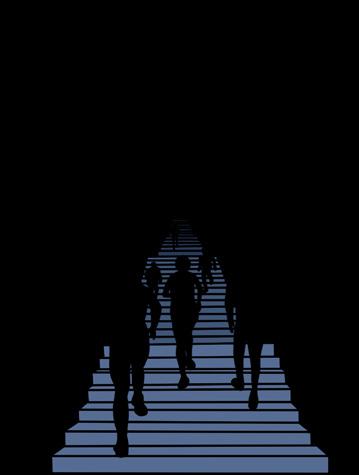
Emily Rogers, News Mihail Cubata, News Dalainey Gervais, Features Olga Fedossenko, Features Megan Freedman, Arts Maja Tingchaleun, Arts Melody Yang, Sports Radhia Rameez, Sports Beatriz Simas, Photos & Design Natalie Ng, Photos & Design Sabrina Mutuc, Photos & Design
TO CO NTRI BU TE & CONNECT: themedium.ca/contact
Tia Cummins Contributor
As the new year comes around, my family sets up our tray of 12 round fruits once again. We open our windows, scatter coins around the house, and make as much noise as possible when midnight hits. Being a half-Asian child who has grown up in Canada’s Western culture, sometimes these cultural superstitions seem a little silly and pointless to me. But to my mother, who is from The Philippines, each ritual has its own important purpose. Even though I don’t believe in any superstitions, I participate in them anyway. Whether you choose to believe in them or not, cultural superstitions can still hold a lot of value.
In The Philippines, there are many superstitions that come with each important day. On my birthday, I am given a large container of rice noodles, called pancit, to share at work, in hopes that I live a long life. Although it seemed a little odd the first time around, I took them anyways. Who says no to good food? I understood the general idea—long noodles, long life—but it didn’t have any real meaning behind it.
Obviously, the noodles won’t have any real effect on my lifespan. The intentions behind the act of bringing noodles are what gives this superstition value—it shows love and care from my mom. She takes time out of her busy day to prepare food for me knowing it has no physical effect on how long I live. This specific superstition also provides an opportunity to share an aspect of my Filipino culture with my coworkers. They get to taste a new food from a different culture and participate in this Filipino superstition.
Editor | Kareena Kailass opinion@themedium.ca
The new year brings many superstitions with it in Filipino families. Kids jump from stair steps at midnight so that they will grow taller, and people put sticky rice on dining tables to symbolize how their family will “stick” together.
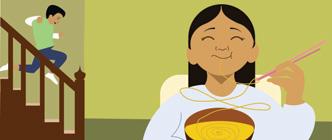
My favourite superstition is making as much noise as possible at the stroke of midnight. Every year, I look forward to joining my family in banging frying pans together, shaking containers full of coins, and yelling as loud as we can to scare off the evil spirits in the house. For me, this acts as a family bonding moment where we can all laugh and simply have some fun. This is exactly how I want to start each new year.
Looking at both superstitions, the common theme behind them is good intention. Each time my mother cooks a certain food or tells me to do some odd action, she does it with the belief that it will help me in life. Whether that is a simple goal like hoping to grow more, or something bigger, like increasing lifespan, each action is always rooted in positive energy. Not only do these superstitions show how my family cares for and wants the best for one another, but it also allows us to get in touch with our cultural background and truly appreciate family tradition.
Got resolutions? The RAWC is ready
The RAWC’s new improvements are perfect for your fitness resolutions.
Tiana Dunkley Contributor
As students, faculty, and staff return to the University of Toronto Mississauga (UTM) for the start of the winter semester, many are looking for a fresh start to 2023. In light of the countless fitness New Year’s resolutions, all gyms across Canada are ramping up for changes. UTM’s Recreation, Athletics and Wellness Centre (RAWC) has also followed in growing to meet the influx of people looking to work out at the gym. The improvements include a major expansion to the RAWC’s Fitness Centre and additional Strength and Conditioning programs.
Since opening on January 2, 2023, the brand-new Cardio Centre (formerly the main staircase leading to the Davis food court, overlooking Gym A/B) is ready to take on anyone embodying the phrase, “new year, new me.” The usually quiet staircase is now bustling with busy bodies trying to increase their heart rate.
“There is no need to sign in at the welcome desk. We encourage all visitors looking to work out to briskly walk up and down the large staircase several times before touching any fitness machines,” says Amrit Singh, a facility assistant at the RAWC. “It’s easier than using a StairMaster!”
While many question the closure of the former staircase, Head Coordinator at the RAWC, James Squire, emphasizes the Cardio Centre’s importance. “The people here feel like they’re on their way to completing year-long goals. Imagine if all the cu-
bicles on campus were removed. Without the cubicles, how else are people supposed to feel like they’re studying? That’s like suggesting people just go outside for cardio! It’s ridiculous!”
In addition to the Cardio Centre, the RAWC announced new introductory sessions to be held at the Strength and Conditioning Centre. “We want people to learn and feel comfortable about the equipment before jumping in,” says Chris Ford, a RAWC personal trainer. “In these intro sessions, we encourage people to lightly caress the weights on their first few visits to the gym. Some beginner lifters are hurt when they cannot bench press twice their body weight. Hurt quite literally.”
With many becoming interested in fitness in the new year, the RAWC’s initiative aims to keep all visitors safe while at the gym.
“The mirrors they’ve installed around the staircase are perfect for taking quick gym selfies and making sure I have good form,” says Mark Barrett, second-year criminology student. “As a bonus, after an intense walk up the stairs, I’m greeted by the delightful aroma of the Davis food court.”
The RAWC implemented these changes after a treacherous re-opening in 2022, which saw people fighting over whose turn it was on the rotating wall-climb, using treadmills in groups of threes, and mistaking weightlifting chalk for pre-workout.
“We hope UTM will embrace these improvements,” says Anita De Sousa, a RAWC Welcome Services Assistant. “We have the capacity to meet everyone’s ambitious new year resolutions safely.”
The improvements are set to be removed on Monday January 16, 2023, a week after classes resume on campus.
@themediumUTM @themediumUTM @themediumUTM @themediumUTM @themessageUTM @humansofUTM_
MASTHEAD
Cultural superstitions are more than just (un)justified beliefs.
New year, same superstitions
BEATRIZ SIMAS/THE MEDIUM
Changing Leaves:
Renewing our 2023 intentions
Aia Jaber Columnist
Is artificial intelligence a threat to human authors?
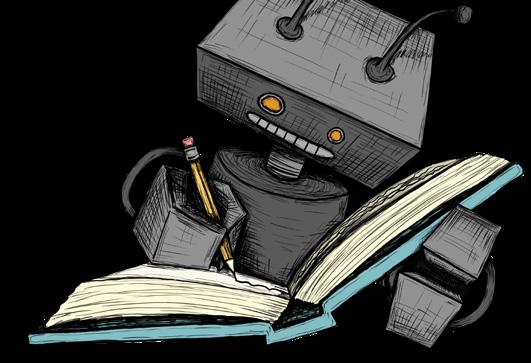 Hamna Riaz Contributor
Hamna Riaz Contributor

As artificial intelligence (AI) continues to advance, there has been speculation about whether it could eventually replace human authors in the writing process. While AI has certainly made great strides in natural language processing, there are several reasons why it is unlikely to fully replace human authors in the near future.
One of the main limitations of AI is that it is only as good as the data it is given. While AI can analyze large amounts of data and identify patterns, it does not have the ability to think critically or creatively in the same way that humans do. This means that AI is best suited for tasks that involve analyzing and organizing information, rather than generating new ideas or concepts.
“While AI can analyze large amounts of data and identify patterns, it does not have the ability to think critically or creatively in the same way that humans do.”
In contrast, human authors are able to draw on their own experiences, emotions, and insights to create unique and engaging content. They have the ability to craft compelling storylines, develop rich characters, and convey complex ideas in an engaging and accessible way. This kind of creative thinking is simply not something that AI is capable of replicating.
Another factor to consider is that writing is not just about the words on the page. It is also about the structure and organization of the text, as well as the tone and style of the writing. These elements are all important in conveying the intended message and engaging the reader. While AI may be able to generate coherent text, it is unlikely to be able to capture the nuances of writing style and tone that are so important in effective writing.
Furthermore, writing is a social activity. It requires collaboration and feedback from other peo-
ple in order to produce the best possible results. AI does not have the ability to engage in this kind of social interaction, which is a key aspect of the writing process.
It is also worth noting that writing is not just about producing words on a page. It is also about research and fact-checking, which are important skills that are difficult to automate. Human authors are able to dig deep and find sources of information that are relevant and accurate, while AI systems may rely on incomplete or biased data.

So, while AI may be able to assist with certain aspects of the writing process, it is unlikely to fully replace human authors. Instead, it is more likely to be used as a tool to help writers organize their thoughts and streamline their workflows.
Keeping all of this in mind, I believe that for university students interested in pursuing a career in writing, it is important to focus on developing the skills that are uniquely human. This includes honing your creative writing abilities, learning how to engage with your audience, and being able to think critically and communicate effectively. By cultivating these skills, we will be well-equipped to succeed in the rapidly evolving world of writing, regardless of the role that AI may play.
What do you think?
Now, what if I told you that almost the entire article up to this point was written by Chat GPT, an AI writing program, given the prompt “Write a 700-word opinion article for university students about if AI can replace authors”? Does that change your answer?








The fascinating world of AI and its impacts on society are truly unknown and ever-growing. By the time we begin to uncover a fraction of it, it will have changed even more. Both terrifying and thrilling, AI is just getting started.
Lights
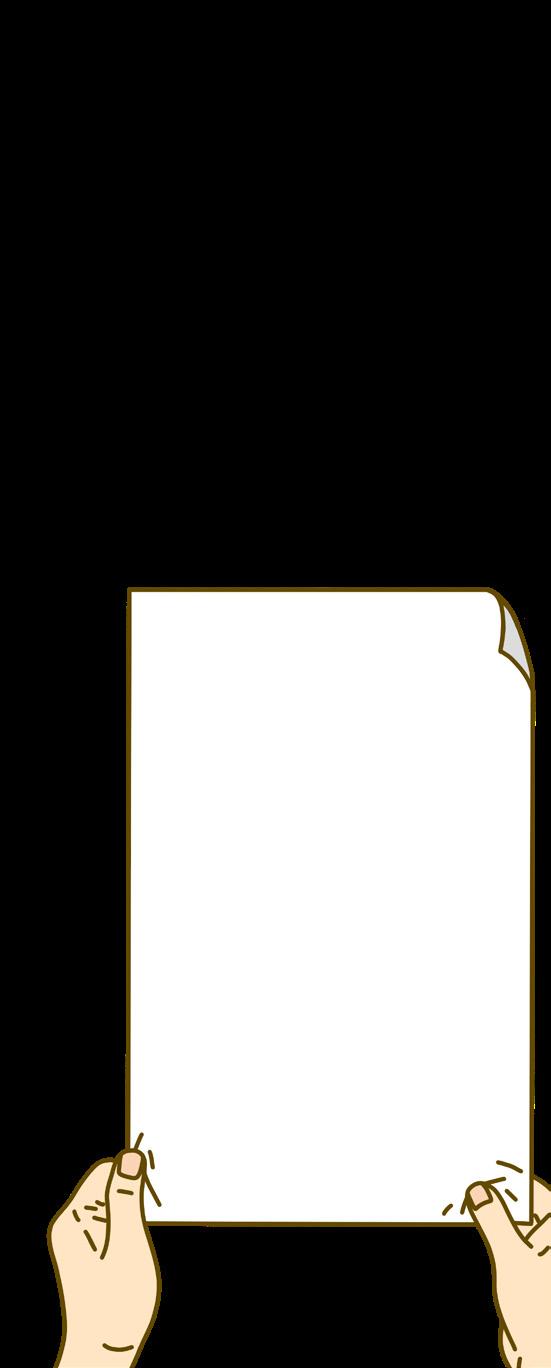
gleam, skates glide across the ice, and overly sweet hot cocoa magically appears in my hand almost every single night of the holiday season. With the break coming to a close, I’d like to take a moment to reset our intentions for 2023. I don’t really believe in New Year’s resolutions; maybe they work for others, but I think intentions and new beginnings force me to hold myself accountable for the year—or at least for January.
I’ve learned and developed some new habits and mindsets throughout the Christmas break, as I urgently needed to adopt some healthier thought patterns. I’ve read books, gone out, spent more time with family, and watched shows, but I’ve also caught myself crying, blaming myself, lashing out, isolating myself, and staring at the ceiling while overwhelming thoughts clouded my mind. Now, more than ever, is the time to state our intentions and what we’ve learned. Grab a pen, write yours down with me, and let’s revisit them at the end of the semester. Mine are pretty vague, and I acknowledge that within each intention is a journey, but do as you wish, because this is your personal list.
Start assignments, tasks, and obligations as early as possible to avoid unnecessary stress. My rule is, if you can do it in under five minutes, do it now. That includes hanging your clothing, washing your dirty dishes, writing a draft, and whatever else you may have on your plate.
People think less about you than you think—especially people from high school. There is no need to worry about how those from your past perceive you.
You’re young—so act like it. Stop imposing strict standards and have fun. Stop acting like an adult and start acting like an actual university student. Seek adventure, big or small. I’ve made a bucket list that includes flying a kite.
Grades are important, but they are not more important than your sanity and health. Nothing is worth more than your well-being. Help yourself now to ensure success later.
You don’t need to do a million projects or jobs to feel successful. Focus your energy on what is really important, and that includes your relationships. Protect what you have now.
You could be the nicest person on Earth, and people will still dislike you. And unfortunately, you can’t do anything about it.
Professors are normal people, and some can be really nice. Go to office hours, send emails, and talk to them. I wish I had done this earlier.
Life is full of highs and lows, that much is guaranteed. The only aspect of life within your control is how you react.
9. Don’t be afraid to give new people a chance. I’m very hesitant with who I call a best friend, but 2022 gave me a really amazing one.
10. Fear can sometimes be a good thing because it forces you to stay in the moment. We’re not here forever, and I want to make sure I remember every detail while giving my full attention to who is with me.
And this is not the end of it. There are lessons in more things than we know—we just don’t always realize them along the way. So, from now till the end of the semester, let’s take the time to reflect on the lessons we have learned, and try not to worry too much about the lessons still to come.

09
“Human authors are able to draw on their own experiences, emotions, and insights to create unique and engaging content.”
Are AI writing tools like Chat GPT able to replace human writers?
The Medium’s walk down 2022’s memory lane
May and June
If 2022 was a fragrance, it would have notes of 2021, with hints of 2020 that smack you right in the face every now and then. With its threats of another pandemic looming over us like 2020, a war being waged, and the loss of many influential figures, 2022 was a year of events and memories that will make history. So, The Medium has recapped some of the most memorable and significant moments that 2022 had to offer.
January and February
All hyped up to start in-person courses and ready to accomplish our new year’s resolutions, January hit like a wave of disappointment. With the new Omicron variant, Covid-19 cases were rising, which forced U of T to keep its classes online until February 7, 2022. Meanwhile, with the introduction of vaccine mandates, international students were struggling to book their flights and find appropriate lodging in time for the start of classes.
On January 31, 2022, the Ministry of Education announced its Anti-Sex Trafficking School Board Protocol. The plan sought to develop protocols to efficiently prevent, identify, and intervene where appropriate, in part by creating a safer environment in schools through educating staff.
On February 24, 2022, the Russo-Ukrainian war escalated, with Russia invading the Ukraine, resulting in over 400 casualties within the days following the invasion. With that came one of the largest refugee crises since World War II. Shortly after, Canada, along with many other countries, imposed economic sanctions on Russia, including the prohibition of oil imports and Russian Central Bank transactions.
Prisha (Maneka) Nuckchady, Features Editor
March and April
From celebrity drama and historic athletic accomplishments to a hope for a better future for Indigenous Peoples, March and April of 2022 brought us a whirlwind of events.
March 2022 met us with a slap—literally. After Chris Rock’s crude joke about Jada Pinkett Smith, Will Smith made headlines as he smacked Rock at the 94th Oscar Academy Awards. Leaving viewers awestruck, the slap swamped nearly every news platform, and debates about cancelling Smith filled social media feeds. Later in April, Smith resigned from the Academy.
Outside of Hollywood, March 2022 marked a monumental moment for Canadian Alpine Skier Molly Jepsen. Coming home with a gold medal in women’s downhill skiing from the 2022 Beijing Paralympics, Jepsen made history as Canada’s first Paralympic gold medalist. Born with missing fingers on her left hand, 22-year-old Jepsen has already achieved a total of five Paralympic medals in her career.
April 2022 came with a reminder that Canada’s Indigenous communities are continually in need of clean drinking water. In April, Prime Minister Justin Trudeau stated that $214 million will be invested by the federal government to construct a better water system in Iqaluit, Nunavut. Such efforts are crucial to heal the Indigenous water crisis across Canada. April reminded us that more education and funding for clean drinking water in Indigenous communities is key to a future of reconciliation.
Julia Skoczypiec, Arts and Entertainment Editor
May 2022 saw new fears arise regarding the possibility of a new pandemic, as Canada saw its first two cases of monkeypox confirmed in the province of Quebec. By May 25, the Public Health Agency of Canada released a statement confirming 16 total cases within the country.
High-profile celebrity court cases dominated the beginning of June 2022’s headlines, starting with two guilty verdicts in the Johnny Depp and Amber Heard defamation case. Videos of testimonies, conspiracy theories, and longwinded explanations infiltrated TikTok feeds and media outlets as Depp and Heard were both awarded compensatory damages after their morethan-month-long trial. In Canadian courts, Hedley frontman Jacob Hoggard “was found guilty of sexually assaulting an Ottawa woman,” however was cleared of similar charges involving a 16-year-old girl.
Friday, June 24th marked the day the United States decided to write another chapter in Margaret Atwood’s The Handmaid’s Tale series, as the supreme court overturned Roe vs. Wade, the “landmark precedent” that supported abortion as a “constitutional right.” This raised great fears regarding the ability for women in the United States to access equitable and safe reproductive healthcare.
Juliana Stacey, Managing Editor
July and August
July 2022 welcomed us with hopefulness. UTM announced that mask mandates were to be lifted on July 1, paving a path to what we thought would be the end of public health scares for good. Unfortunately, that hope didn’t last for too long. On July 23, the World Health Organization declared monkeypox as a public health emergency.
On a lighter note, social media feeds were flooded with Mr. Men & Little Miss memes, poking humour during a time of uncertainty amongst us again. But Mr. Men & Little Miss quickly lost the social-mediaspotlight to the “Corn Kid” whose unwavering love for corn took social media by storm.
Caribana also made its return for the first time in two years. For many, this meant not only a chance to socialize and celebrate, but to celebrate diversity, culture, and unity.
But July and August weren’t all hope and fun. Moments of life-altering horror plagued the lives of many too. Pakistan faced fatal flooding, which took the lives of thousands of innocent people, and displaced thousands more. And that wasn’t all the unrest that was amongst us. Wildfires, fatal heatwaves, and much more was among the world.
Amongst this all, The Medium began its 2022-2023 publishing year. And with this, August brought about hopes, dreams, goals, and of course, new stories.
Kareena Kailass, Opinion Editor
September and October
Fall 2022 was the first fall semester since the beginning of the pandemic that students were permitted to attend campus without a mask. As students returned to classes unmasked and without social distancing, many voiced concerns in early September regarding public health safety being compromised when measures were relaxed.
Early in September, Queen Elizabeth II, monarch of the Commonwealth, passed away at the age of 96, marking the end of her 70-year long reign. Her fu-
neral service took place on September 19, 2022, at the Westminster Abbey. She was buried that evening at the King George VI Memorial Chapel within St George’s Chapel, Windsor Castle. After mourning the loss of the Queen, the Commonwealth welcomed His Majesty, King Charles III, as the new monarch.
Additionally, tragedy struck in other corners of the world, and on September 16, 2022, the spotlight was placed on Iran. Mahsa (Zhina) Amini died while in police custody that day in Tehran, Iran. Her death sparked widespread protests in the country and across the world, calling for respect of women rights and abolishment of theocracy—rule by members of the clergy and religious laws.
On a lighter note, the return of in-person celebrations for Halloween 2022 sparked joy within many Canadians. During October, sexy nurse costumes, large-scale Halloween festive displays, and hanged mannequins made their way into celebrations, spurring a wide array of responses—from criticism for misrepresentation and poor taste to excitement for new experiences.
Larry Lau, News Editor
November and December
For many, November and December of 2022 consisted of streaming the World Cup during exam season, praying for France’s downfall, and wondering why Chris Evans was named People magazine’s Sexiest Man Alive when Jason Momoa and Henry Cavill walk this earth. But those weren’t the only notable events of the final months of the year.
In serious news, on November 4, over 50,000 Ontario education workers went on strike to fight for wage increases. The Ontario government’s more recent offer is of a $1-per-hour raise for education workers each year—an approximately 3.59 per cent yearly raise.
While teachers were protesting for better pay, their students and our peers were preparing for war on the TicketMaster website, determined to make their Swiftie dreams a reality. On November 15, 2022, Ticketmaster sold more than two million tickets for Taylor Swift’s The Eras tour. As fans and stans waited for hours in line, missed their midterms, and hot-spotted their computers while in transit, the American ticket sale and distribution company made big bank selling the most tickets in a single day.
Lionel Messi appeared at the World Cup for a record 26th time in his career, taking his team—Argentina— to victory. He also overtook legendary player Pelé with most direct goal contributions at the World Cup. Pelé, an ex-Brazilian soccer star passed away at the age of 82 on December 29, 2022, after a battle with colon cancer. On the same day, Dame Vivienne Westwood—an iconic and eclectic British fashion designer—passed away at the age of 81.
With such a dark twist on the overly-long year, 2023 brings new beginnings and an opportunity to reflect, binge watch Kaleidoscope before the school year starts, and begin the countdown to summer.
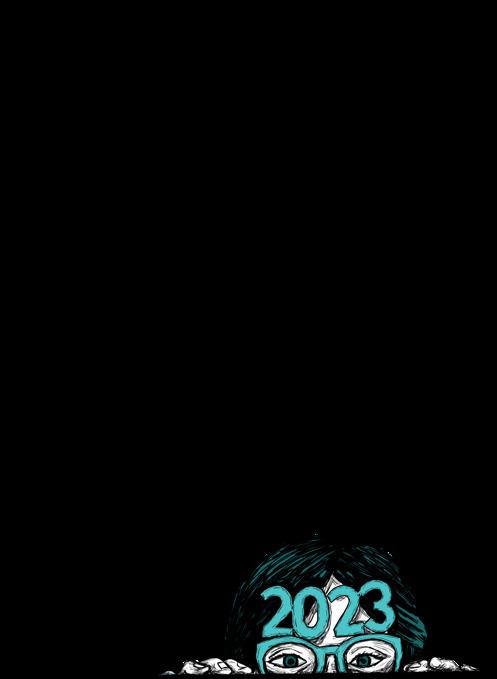
The team at The Medium would like to wish you all a 2023 filled with health, wealth, and hopefully, no more pandemics.
Elizabeth Provost, Editor-in-Chief
10
Reflecting on times of laughter and the times of tears experienced this past year.
Editorial
The Medium
Creatives for Change uses art to innovate

 Dalainey Gervais Associate Features Editor
Dalainey Gervais Associate Features Editor




In the sixth grade, Isabella Vreux first played the viola. “I trained every day for three years to become classically trained and play my instrument at concerts,” says Vreux. The art of music quickly became an integral part of her life; she used it as a form of expression. During the pandemic, Vreux played the viola to stay connected with the world. “[It] protected my mental health and helped me find energy and life in art, while the world outside of my home was still [in lockdown],” she recalls.
“[It] protected my mental health and helped me find energy and life in art, while the world outside of my home was still [in lockdown].”
Creatives for Change, active at the University of Toronto Mississauga (UTM) since 2014, is a student-run association that supports students in their artistic endeavours by promoting creative expression. In 2022, Vreux, along with the current executive team, re-invented the group and strengthened the association’s core value of providing students with creative outlets.
“The club creates an environment that advocates for mental health, physical wellness, and innovation.”
“Coming into university in 2021, when Covid-19 restrictions were on and off, I wanted to continue my artistic journey,” shares Vreux. She wanted to join an art club and stumbled on the Creatives for Change club on the University of Toronto Mississauga Students’ Union’s website. The club was, however, inactive. After considering the need for such a community at UTM, Vreux says she, “began the process of reactivating it and making it [her] own.” Now, as the
2022-2023 president of Creatives for Change, Vreux hopes that by encouraging creative expression, the club creates an environment that advocates for mental health, physical wellness, and innovation.

While in lockdown, Vreux found inspiration that fueled her art, which lead her to research the benefits of using art for well-being and academic innovation. “The therapeutic benefits of art have been studied through empirical scientific research, which proves the existence of emotional and physical relief through creative expression,” explains Vreux,
highlighting the importance of including art throughout your day-to-day activities. In the reimagining of the club, Vreux reflected on how she relied on her artistic outlets in times of hardship. She explains that she “found inspiration during [her] time exploring [her] connection to art, to create an artistic space for all UTM students to express themselves.”
Art has often been associated with enhancing brain function, which makes it no surprise that creative expression also aids in developing our ways of thinking. “Exercising more complex thinking processes helps lead
us to continued habits of working outside of the box and using divergent pathways when approaching challenging work,” explains Vreux. This further validates the importance of including art education in school and on campus.
While art fosters academic innovation through the stimulation of complex thinking processes, it further helps provide comfort to students in the form of stress relief. “What is so magical about art is that it is a physical release from your mind, body, and soul,” says Vreux, “and unlike other forms of therapy, art is accessible to everyone.” Just as yoga or dancing can relieve physical tension, art forms like painting or playing an instrument can help release mental loads. “The mind and body are often shown to be connected, as wellness and release in one area [helps] in the relief of another,” explains Vreux.
“Unlike other forms of therapy, art is accessible to everyone.”
This year, Creatives for Change is highlighting music as a form of creative innovation. Vreux shares that the group is “looking to invite musical artists from Toronto to speak to the student body and […] encourage UTM students to express themselves using sound as an art medium.” Music as a form of artistic therapy has long proved to be an effective way to promote wellness, manage stress, and even alleviate pain. It has helped enhance memory, which can be beneficial for students looking for greater academic and personal success.
For those who are afraid to look for creative outlets because they don’t consider themselves artsy: worry not! Art is subjective: “What you create is an expression of who you are and your experiences,” says Vreux. If you are looking to develop your creative expression, reach out to Creatives for Change (@ utm.c4c on Instagram), who will guide you to the outlet that works best for you.
11
features
features@themedium.ca
Editor | Prisha (Maneka) Nuckchady
“Art has often been associated with enhancing brain function.”
Isabella Vreux, current president of the UTM club, highlights the importance of art on campus.
C4C
By: Reid Fournier
An unpredictable winter break

Taylor Swift dance party cut short
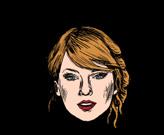 Prisha (Maneka) Nuckchady Features Editor
Prisha (Maneka) Nuckchady Features Editor
Back in September, I planned on visiting one of my closest friends in Ottawa to attend a Taylor Swift dance party. After booking a bus ticket, little did I know that it was not going to happen—I had gotten my days messed up. Turns out I had a doctor’s appointment that I could not reschedule.
Fast forward to December 25, my friend was preparing to visit me. Bad luck struck again, postponing her bus ticket to the following day. She had told me that she wanted to surprise me with a late birthday present on December 29, and that I should ensure I had nothing planned for the night. I could tell what it was—a thoughtful Taylor Swift dance party ticket that I kept seeing advertised on my Instagram.
I had never been to a nightclub or any kind of fancy dance party before, so I was restless waiting in line, worried it wasn’t the right venue. As we approached the entrance, I started hearing echoes of familiar songs. Yup, we were at the right place.
But literally, minutes into the dance party, I started feeling nauseous. However, nothing was going to cut our night short. Fully planning on returning by 10:30 p.m., or 11 p.m. at the latest (as per my worried dad’s hopes), we found ourselves jamming out to Taylor’s songs past midnight. Seeing everyone shamelessly vibing to her songs was enchanting. While I was telling my friend that we should probably leave as I nibbling on mint-flavoured candy, the dizziness got the best of me.
Finally, out for fresh air and starving, we stopped at Dominos—the closest food joint we could find—to recuperate before taking an Uber home. Feeling a little guilty that I was unable to stay longer, my friend reassured me, maintaining I should have said something earlier. We finished our night by watching old Disney shows till we fell asleep. Regardless of the night being cut short, spending this exciting evening with her and screaming to some of Taylor Swift’s best songs, was a memorable time—one I look forward to hopefully recreating with her soon.
Chills and Thrills of Winter 2022


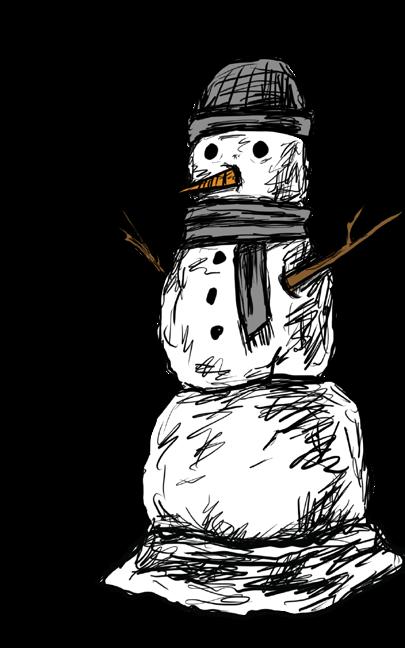 Danica D’Sa Contributor
Danica D’Sa Contributor
“Makea pizza, make a pizza,” I repeated with exasperated breath as I picked up speed on the ski hill, trying to remember what the instructors taught us before releasing us on this hill of doom. Instead of going in a graceful zig-zag pattern like the other students, I went down the slippery hill with wobbling skis, desperately trying to stop by making a pizza slice shape with my skis. The grainy, blowing snow covered my view as I held on to the ski poles tightly.
The bitter rush of cold had me aggressively squeezing the hand warmers in my gloves, trying to drain out every bit of heat into my body. In a split second, I didn’t register that I fell, until I collided with the sparkling, cushioned ground. In that moment I felt grateful that it had snowed the previous day. I sat in the middle of the hill, catching my breath and watching the beautiful view of the surrounding forest from afar. I knew that nothing could top the adrenaline and ecstasy I experienced going down the hill.
I remembered this moment as I counted down the new year at Harbourfront. I looked back at the joyful memories I experienced, the new people I met, and the failed pizza slice ski I attempted. They all shaped who I am. I pictured the clock ticking closer to a new year as people counted down. I savoured my dearest memories and those closest to me like a wrapped gift. I knew I was to cherish these memories forever.
“One more week, and I will be done.” “Three more days left.” “Only 24 more hours.” These were some of the thoughts that ran through my head during exam season. But for someone who was so excited to be done, I was very confused about how to actually spend my break.
It started off with a bang. I consumed about four seasons’ worth of TV shows in two days. Christmas approached, and I spent it with my family while eating copious amounts of delicious food. In the days between Christmas and New Years–when I kept forgetting what day it was–I had a lot of free time.
During the semester, I spent nearly every day on campus, and the introvert in me wanted some alone time during the break. After reflecting on my semester and catching up with friends, I browsed for new hobbies and decided on trying gel nails! It was incredibly therapeutic and inspired me to continue exploring my artistic side in 2023.
Much to the excitement of the people who usually drive me around, I also enrolled in driving school, which was equal parts fun, boring, and terrifying. This winter break was mostly about being comfortable with doing nothing, while figuring out what I did want to do since no school meant no concrete routine. Although my 2022 winter break lacked the familiar bustle, it was especially relaxing, which I have come to appreciate greatly.
boba, no Starbucks, no fun!” I think to myself as I arrive in my small town of Fenelon Falls for the winter break. Fenelon Falls is the kind of small rural town you see in cheesy Hallmark Christmas movies where a successful city woman returns home and rediscovers “the true meaning of the holiday season.” In a way, that is exactly what happened this holiday season.
While living in Mississauga, I grew accustomed to constantly having everything I desired at my fingertips—shopping, fast food, friends. When I walked through the front door, I was greeted by my cats and a beautifully decorated Christmas tree—I was excited to be home.
But then, the first snowflakes began to fall. By noon, the peaceful snowfall was a monstrous blizzard. My mother’s phone started ringing nonstop as part of her job was to help coordinate the crews restoring power to areas affected by the blizzard.

Luckily, I was still able to celebrate Christmas Eve dinner surrounded by my family. As per our usual German traditions, we enjoyed delicious sandwiches with slices of fresh deli meat and cheese, warm bakery buns and steak tartare—a German delicacy.
Unfortunately, on Christmas Day, we were not as lucky, as my mother worked through Christmas morning and Christmas dinner. While it was frustrating not being with her on such an important holiday, it allowed me to appreciate the things that I was fortunate enough to have at Christmas. It also made me realize that the holidays are not about the gifts or the food that we eat, but rather the people we get to spend them with.
12
Students share their holiday adventures.
Let it Snow! Let it Snow! Let it Snow!
Madison Ireland Contributor
“No
My long-awaited, not super eventful, but nevertheless special winter break!
Bringing accessible support to international students and English Language Learners with ELL Peer advising
2015. “We were seeing a lot of international students coming up feeling like we needed to supply more support within the DVS,” notes Professor Caskey.
I
n 2021, the University of Toronto Mississauga’s (UTM) international student enrolment increased to account for 37 per cent of new students, making international students an undeniable student body. Yet, we sometimes fail to acknowledge the difficulties international students face adjusting, especially when it comes to language. Nonetheless, there are many campus resources designed to help English Language Learners (ELL), one being the ELL Peer Advising initiative. Offered by the Department of Visual Studies, the program provides informal support to English Language Learners.
As an ELL Peer Advisor, I had the pleasure of interviewing Professor Jill Caskey, the chair of the Department of Visual Studies (DVS), to discuss the intentions behind our work and to shed light on an important matter.
“In many ways, we are all English Language Learners.”
We spoke about the nature of an English Language Learner as the term can easily be misinterpreted. “It would be someone who has to study English to master it and deals with perhaps some unease regarding English,” explains Professor Caskey. There is, however, another way of interpreting English Language Learning. According to Professor Caskey, the second, broader definition encompasses even native English speakers wishing to expand, improve, and refine their skills (writing, reading, listening, speaking). In many ways, we are all English Language Learners.
“We were seeing a lot of international students coming up feeling like we needed to supply more support within the DVS.”
That being said, ELL Peer Advising targets the first category, given that non-native English speakers are less familiar with the language. Alison Syme, the previous chair of the DVS saw the language barriers some students were facing and came up with the idea of ELL Peer Advising in
Although the Robert Gillespie Academic Skills Centre provides resources and workshops, Professor Caskey explains that the DVS used to supply tutorials for ELLs for developing skills related to specific DVS courses. Then came the initiative of having students do the advising. “Alison thought we needed peers to share experience and be sounding boards. Students trust students. Therefore, adding students was a critical piece,” shares Professor Caskey.
In terms of accessibility, the DVS wanted to ensure that meeting an ELL Peer Advisor was not too complicated. Students wanting to speak to an ELL Peer Advisor don’t need to sign up for anything. “We’ve got drop-in hours which are advertised through posters around campus that have a Zoom link. You just have to join the Zoom meeting and wait for an ELL peer advising to let you in. I’ve envisioned the informal drop-ins because the best conversations are the ones that just happen,” explains Professor Caskey.
Further limiting students’ ability to engage in conversations, the pandemic took a toll on students’ social lives. After all, speaking to someone in-person is a great way of learning a language. However, the pandemic deprived students of this opportunity. “It’s been really hard,” admits Professor Caskey, “ELLs missed out on opportunities to have informal conversations in English with their classmates. They have been in lockdown, and not able to socialize. Listening to online lectures is not the same as listening to live lectures. Opportunities to hear and speak English as a live language decreased.”
It does not help that living in an environment where you don’t speak the language well is isolating. Professor Caskey herself has experienced language barriers during her studies. “I know how hard it is. Having studied myself in places where I was not completely comfortable with the language, I know how it is to listen but not be proactive socially when you would be in your own language. When you are young, you worry about being judged. You worry about not speaking as beautifully as your peers,” she shares.
Language barriers not only isolate students, but make it harder for them to form meaningful connections with peers. When struggling to speak English, ELLs can easily shut off and avoid speaking altogether. To other people, this can come off as cold or even distant. Professor Caskey

weighs in on this unfortunate reality of language barriers: “Being misunderstood as someone who is aloof [and] judgmental does not help. As a result, you resort to only hanging out with people that speak your language but end up isolating yourself in your own community. For people whose alphabets are different, that’s another part of the environment that they are unfamiliar with because you struggle to read stuff like notes, signs, or even menus.”
“When you are young, you worry about being judged. You worry about not speaking as beautifully as your peers.”
When speaking of ELLs, we tend to focus on verbal expression and how we can help ELLs speak better. We forget that difficulties reading another language or another alphabet system are the most hindering. As someone who has also experienced those difficulties, Professor Casey shares, “I have been involved in a couple of international projects, one in China where I experienced an inability to read the environment and just how hard it is to learn basic phrases in Mandarin and Cantonese. It gave me great empathy for Chinese students here.”
“Language barriers not only isolate students, but make it harder for them to form meaningful connections with peers.”
As part of the UTM community, we must make a better effort to acknowledge the difficulties international students and English Language Learners face when studying in an Anglophone environment. Although the pandemic had a negative effect on all students, non-native English speakers continue to struggle with English, which impedes on their academic performance, social life, and consequently, their self-esteem. If you are an English Language Learner (or know one) who is struggling, if you want to improve your skills, or if you are seeking advice, consider emailing dvschair.utm@utoronto.ca. Alternatively, for more details about in-person and virtual drop-in hours, please visit the DVS website for updated information.
We hope to hear from you soon. You’ve got this!
13
Aïssatou Odia Barry Contributor
“I really hope as we come out of the pandemic, that the program can flourish and serve a greater need which is much more pronounced now,” shares UTM Professor Jill Caskey.
VICTORIA BAR
Arts
Swimming across the Aegean Sea—an analysis of The Swimmers
In
Aia Jaber Columnist
Trigger warning: The film contains detailed scenes of violence and sexual assault
Disclaimer: This article contains spoilers from The Swimmers
Heavy currents strike against a patched raft, turning a 90-minute trip between Ayvalik, Turkey and Lesbos, Greece into hours of travel. The sun has set, and the moonlight pierces the pitch-black waters. From the raft we hear echoes of the wails of a newborn, the nervous praying of the passengers, and the crashes of rapid waters sinking the boat. Two sisters, Yusra and Sarah Mardini, jump off the boat and choose to swim alongside the raft. Desperate for air, they sacrifice their lives to save the other refugees from sinking in the Aegean Sea.
This story represents the thousands of Syrian refugees who left Syria to seek sanctuary in countries like Germany, the United Kingdom, and Canada. The Swimmers, directed by Sally El Hosaini, is based on the true story of Olympian Yusra Mardini (Nathalie Issa) and human rights activist Sarah Mardini (Manal Issa). The Mardini sisters are played by two real-life sisters—their relationship made evident through their on-screen chemistry. The plot evokes a complex array of emotions—from the moment Yusra is shown swimming with her father, to the bomb that shatters the roof of the swimming arena, to the sisters jumping out of the raft. As the sisters tread on foot from Greece to Germany, frequently entrapped in the back
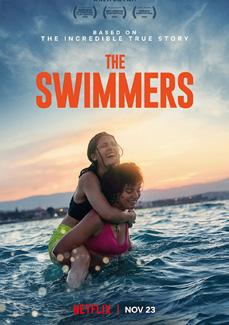
of suffocating trucks and in view of predatory eyes, viewers begin to understand the struggles and sacrifices that come with seeking a new home in a new country.
I was so mesmerized by the detail in the scenes and cinematography that I watched the film twice. Along with the beautifully crafted moments of Yusra and Sarah swimming for hope, elements of Middle Eastern culture stood out to me. Throughout a scene in Damascus, Syria, I noticed the Arabic “Happy Birthday” song and “Nido”—powdered milk— resting atop a fridge. Cousins, grandparents, and children gathered to celebrate the birthday on screen. Most importantly, the implementation of famous Arab actors such as Kinda Alloush—who plays the mother—and Ahmed Malik—who plays cousin Nizar—placed importance on Arab culture. The film switched between Arabic and English, making it enjoyable to speakers of both languages alike. It is a work of art to be enjoyed by masses.
When I watched Yusra gasping for air while swimming to the Greek shores, I felt terrified, as if I was there with her, drowning. The scene showed most refugees leaving at night to avoid coastguards. They were obliged to destroy their boat so that authorities could not send them back on it. Extending beyond the Syrian ethnicity, refugees of Iraqi, Eritrean, and Afghan backgrounds were present. The film wonderfully showed the collective struggle, as refugees of all cultures, religions, and ethnicities huddle closely on their journeys. Constantly being promised sanctuary, these refugees are frequently betrayed.
The Swimmers portrays the realities of millions who have been displaced. Yusra’s ambition to swim for the Olympics adds uniqueness
to the plot, as she is one of the few characters to pursue their passion upon arrival to a new country. Throughout the film, she trains frequently, determined to achieve her and her father’s dreams of being a professional swimmer. After months of heartache and longing for her parents and younger sister back in Damascus, Yusra demands attention from German swimming coach Sven Spannekrebs (Matthias Schweighöfer). With rigorous training, Yusra is added to the IOC Refugee Olympic Team and competes in the 2016 Summer Games in Rio de Janeiro, Brazil. Yusra swam on the same team in the 2020 Tokyo games.
Yusra Mardini has since quit professional swimming, choosing to spend time with the
Editor | Julia Skoczypiec arts@themedium.ca
rest of her family that made it to Berlin while also pursuing school and activism. Sarah Mardini has been accused of smuggling and fraud after attempting to assist refugees cross the Aegean Sea. If convicted, she faces 20 years in prison—an act of cruelty that presses against victims of war for the benefit of the country.
The Swimmers is a vivid representation of war, losing loved ones, and searching for identity. Countries throughout the world consistently seek relief from growing tensions that have destroyed their nations. Even within our own communities, we know people whose parents fled their homes for a better life. Some of us have friends who have recently immigrated to Canada, and some of us have just come ourselves, sharing similar stories to the Mardini sisters who left Syria in 2015.
Throughout the film, I consistently remembered the image of a young body, lying on the shore, drowned after attempting to reach land. Alan Kurdi was a two-year-old boy, unaware of his purpose on the boat, terrified in his last moments shrouded by darkness. This little boy had no opportunity to feel the warm sand underneath his feet or to see his parents’ faces fill with joy knowing they had finally arrived in Europe. Alan Kurdi is one of many. Yusra and Sarah Mardini are some of many. The Swimmers leaves us with two different endings from the same origin story.
Refugees and immigrants struggle beyond their old homes. They find difficulty in establishing a source of income, in being accepted by their neighbours, and in finding purpose in this new land. They forever miss the home of their ancestors. The immigrant struggle follows them as they dig their roots into new soil, building their livelihoods from scratch.
Hallmark Movies—What Makes Them
France Staff Writer

In 2014, the University of Michigan conducted a study that linked the media we consume on television to the information we adopt as factual. 625 college students responded to survey questions after “exposure to three romantic screen media genres.” Results showed that watching romantic themed films for longer time periods led to a higher tendency of believing that “love finds a way.”
Consuming various content can give us insight into different perspectives, encroaching upon our outlooks that shape our own romantic ideals. But is this always a negative thing? Many rom com experts (AKA me) don’t think so.
Perhaps the most polarizing of romantic content are Hallmark films. To date, the Hallmark Channel has accumulated 39 total Christmas movies and one Hanukkah flick. According to the Hallmark Channel, it is always Christmas after people have removed their rotting jack o’lanterns from their porches in early November. If avid enjoyers of the channel’s

originals, such as my unapologetic self, made a Venn diagram of the tropes and characteristics present in each film, all would lay in the overlapping section. For over a decade, Hallmark Christmas movies have been a staple during the merry season, offering us familiarity through their predictable outcomes.
Fan favourites such as Mean Girls alum Lacey Chabert (who is still trying to make “fetch” happen) and Ryan Paevey of General Hospital are signed to iron-clad contracts to
regurgitate the same role over and over again. The love-tohate, hate-to-love channel pumps out film after film where romance is always in the air. Profound romantic gestures are seen as common, emotions and feelings are readily talked about, and rejection is bittersweet as every side character’s acute job is to bring happiness to the heroine of the story. The main female always has curled hair, she applies makeup at the crack of dawn, and her outfits are always in season. The characters endure no trepidations, missteps, nor confrontations. Love is easy and comes without delay. The kind and handsome coffee/flower/bakery shop frequent almost always becomes the male love interest. Already loved by the film’s 700-person town, he succeeds in winning the heroine’s heart, all while she realizes the gruffer, slightly obtuse nominee may not be as well suited for her heart as she thought.
Everyone loves the promise of new beginnings. Equipped with the merry season, Hallmark delivers feelings of better days that warm our hearts. Commodifying familiarity, Hallmark films present themselves as more than entertainment. Their predictable plot lines and repetitive character tropes provide viewers with comfort during the often-stressful holiday season.
an honest display of the realities of refugee life, the film tells a story that many need to hear.
IMDb com 14
Memorable? Analyzing Hallmark’s cliché love stories that many seem to return to year-round.
Paige
NATALIE NG/THE MEDIUM
How Avatar: The Way of the Water misrepresents Indigenous culture
Freedman Associate Arts & Entertainment Editor
In 2009, James Cameron wowed audiences with the vibrant world of Pandora in his film Avatar (2009) The science fiction story went on to outperform Cameron’s Titanic (1997), with a box office record held for nearly ten years—until Avengers: Endgame (2019) achieved more sales. The rerelease of Avatar in 2022 led the film to become the champion of the box office once again. Avatar continues to be a visually stunning film with special effects that have managed to stand the test of time regardless of the over-familiar plotline—reminiscent of FernGully: The Last Rainforest (1992). Since its release, the “white saviour complex” that runs deep within the first Avatar has aged poorly. Thirteen years later, Avatar: The Way of the Water (2022) has premiered as the first of several sequels. As the scripts for each film have been written back-toback (like one long narrative), it will be interesting to see how the story is adapted into its own motion pictures—for Avatar 3, 4, and 5.
Prior to the debut of Avatar: The Way of the Water, audiences wondered how Cameron would continue to dazzle with his special effects after over a decade. Avatar follows former marine Jake Sully (Sam Worthington) as he adapts into the Na’vi culture and permanently takes the form of his Avatar. The film showcases his romance with Neytiri (Zoë Saldaña), the daughter of the former Omaticaya clan leader, and teaches viewers about the strengths that come with learning and appreciating others. The Way of the Water picks up with Jake and Neytiri—who are now coping with parenting four teenagers. Their daughter, Kiri (Sigourney Weaver), is adopted—born from the Avatar of the deceased Dr. Grace Augustine, also played by Weaver in the first film. The Sully family is forced to leave their home in the forest when a group of Avatars that embody “the sky people” declare war on Jake Sully. The family seeks the help of another clan, the Metkayina, who teach the Sully family “the way of the water.”
The bioluminescence and balanced ecosystem that connects everyone and everything in the movie is stunning. The visual aspects of Pandora continue to be the most appealing aspect of the Avatar franchise. Because the first film’s main settings are the forest and mountains, the Omaticaya peoples have bonds with direhorses (horse-like
creatures with long necks) and flying dragon-like animals known as “banshees.” The Way of the Water introduces aquatic animals like ilu, skimwings, and tulkun. Its plot focuses on colonization and destruction of natural resources. The tulkun are highly intelligent whale-like animals that bond and communicate with the Na’vi. But, due to a fluid found in their brains that is used for anti-aging on Earth, they are the victims of tulkun-hunting.
While Avatar: The Way of the Water is beautifully shot, the film—with a runtime of a whopping 192 minutes—suffered from too many ideas. Several plotlines intertwine within the film, including scenes that briefly brush over colonization with little detail.
Lack of belonging is a rampantly present theme, as the Sully children are othered due to their mixed ethnicity. The Sully’s middle son Lo’ak (Britain Dalton) bonds with a tulkun named Payakan who had been ostracised by his community for waging war against his mother’s murderers. Another recurring theme seemed to relate to parental conflicts. Jake Sully, the former marine, struggles to connect with his sons. Spider (Jack Champion), the human-child orphaned on Pandora during the events of the first film, grapples with the fact that he feels Na’vi despite his relation to his birth father—villain and colonel Miles Quaritch
(Stephen Lang). Neytiri does not believe that Spider belongs with her family because he is human, which seems odd considering she married and started a family with Jake, a human.
It should be noted that the “white-saviour” critiques of the first film are still valid with The Way of the Water. There remains a serious lack of Indigenous representation in a film that claims to support and celebrate Indigeneity. After a quote from a 2010 interview with James Cameron resurfaced— where Cameron implied that “fighting a lot harder” could have undone the traumas of the Lakota Sioux peoples of South and North Dakota—calls for boycotts of Avatar: The Way of the Water have come from Indigenous Peoples on social media.
It is unfortunate that Avatar: The Way of the Water’s stunning cinematography is bogged down by choppy plotlines and Cameron’s own racial and historical insensitivity. However, this has not prevented the film from climbing to the top of the box office. We can only hope that some of these criticisms were considered with Cameron’s upcoming Avatar 3. Pandora and its inhabitants are magical, but instead of embracing the world he has created, James Cameron allowed himself to continue to perpetuate colonial ideologies that cannot be overlooked.
Books that changed my life in 2022

A breakdown of four books that can change the ways we think about the world.
Maja Tingchaleun Associate Arts & Entertainment Editor
Throughout 2022, I found myself amazed by the connections I was able to make between the books I read, the things saw in the world, and what I learned in class. One of the most beautiful things about reading is that it expands your horizons so broadly that you can form links between vastly different spheres of life. If you’re looking to read more in 2023, here are four books that I read in 2022 that have forever changed my outlook on my life, the world, and the people around me.
Tomorrow, and Tomorrow, and Tomorrow by
Gabrielle Zevin
Published on July 5, 2022, Tomorrow, and Tomorrow, and Tomorrow follows two children who become best friends by playing video games together in a hospital. Years later, a spontaneous reunion leads them to a creative partnership in which they establish a video game company together. The book explores how expressing love—whether it be for our family, friends, partners, or work—changes over a lifetime. Zevin allows readers to think about how our relationships sometimes suffer if we don’t know what we want from our lives or from our loved ones. The novel also explores the fragility of morality, the nature of disability, multi-ethnic identities, and the intersection between the sciences and humanities. Its prose is vivid and compelling, with characters that are frustrating, lovable, and real. Zevin’s world-building is completely immersive, moving the plot at a perfect pace. All in all, Tomorrow, and To-
morrow, and Tomorrow boasts every feature of, in my opinion, a perfect novel.
Know My Name by Chanel Miller
Miller was first known as Emily Doe, the alias under which she released a victim impact statement addressing how a Stanford University student sexually assaulted her on campus. In Know My Name, she shows the world her true self: a quietly confident, honest, and compassionate woman who has profoundly suffered but lives a beautiful life. Miller writes about her painful assault story with nuance and grace. She testifies to the isolation and shame she felt, even when she was unconditionally supported by family and friends. She places focus on how toxic masculinity hurts all women everywhere and reminds readers of the values in accountability. She also celebrates women and healthy masculinity. Hopeful, heart-wrenching, humorous, and important, Know My Name is beautifully written—with everything one could want in a memoir. I tore through it in two days and walked away mourning Chanel’s experience yet amazed at her life. Reading the novel allowed me to grieve for the countless assault victims who do not have the support that Chanel does and inspired me to love and listen better.
All the Light We Cannot See by Anthony Doerr
In 2022, I re-read All the Light We Cannot See for the first time since I read it in high school. I loved it even more after the second read. The story follows a young girl who grows up in Paris but flees to a coastal city in the northwest during the time of Nazi occupation. In a parallel plot, Doerr also tells the tale of a young and brilliant orphan who winds up as one of the Nazis in that very invasion. The two divergent storylines
intertwine in many places over many years, building anticipation for when the worlds of these characters inevitably collide. Thematically, Doerr writes about how each moral compromise makes the next one easier. He allows readers to ponder on their own life choices, evaluating the paths many go down and the meanings of “turning back.” The novel doesn’t shy away from the devastation of war and the evil of Nazism. Darkness lingers in every chapter, sometimes threatening to overwhelm, but light and hope swell in unexpected places. All the Light We Cannot is a story full of heart that will remain on my favourites shelf for a long time.
Oryx and Crake by Margaret Atwood
Oryx and Crake centres on “Snowman,” a character who is possibly the last human alive after a pandemic overwhelmed the world. He embarks on a cross-country trek while reflecting on the pandemic, the death of his best friend Crake, and his deceased lover Oryx. As he journeys, the reader pieces together his tragedy. Atwood is one of my favourite authors: her narration is both beautiful and fun to read. Her writing employs a non-chronological, stream-of-consciousness storyline that keeps surprising you. The detached, minimalist voice she uses to describe extremely traumatic topics feels Orwellian, but wittier. This tone, however, does shift partway through the novel, exemplifying the difficulties that come with life in an epidemic. Oryx and Crake was one of the most formative books I read in 2022. The novel explores the human tendency to sensationalize tragedy. It asks why people mistreat the things they say they love and nurse the things they say they hate. But, most importantly, it feels profoundly plausible and timely in a century of Covid-19 and gene mapping.
While visually remarkable, the new Avatar missed the mark with its representations of colonization.
Spoiler warning: The review reveals the plot of Avatar: The Way of Water.
Megan
sports & health
Alisa Samuel Sports & Health Editor
As an enthusiastic yet somewhat defeatist gym-goer, I’m always a bit reluctant to resume exercising after winter breaks end. I anticipate that my usual spot, the Recreation, Athletics, and Wellness Centre (RAWC) at the University of Toronto Mississauga (UTM), like most gyms at the start of a new year, will shrink and louden with an influx of fitness resolution hopefuls.
But rather than treating the hustle and bustle as an inconvenience to my socially anxious self, I’m coming to realize that, as I write this article, the renewed sense of pluck and possibility that launches people into a healthoriented mentality this month is a good thing to maintain. Here are five ways, when considered in tandem, that can help you turn your fitness promise into an intentional lifestyle.
1. Find a gym buddy
Accountability is a fundamental tool for transformational change. There are some goals we just can’t achieve entirely on our own strength or willpower. They sometimes require the support of someone we choose to answer to when our good plans and wishes fail.
Having someone there to share in your sweaty struggles and cheer you on until you complete that seemingly impossible last rep can keep you from self-isolating in thoughts about giving up. If you’re self-conscious at the gym or intimidated by its big, clanky machines, find comfort in company.
Coming alongside another person so that you work towards physically and mentally healthier lives together also means that you’re invested in improving someone else’s wellbeing. Such a commitment is arguably an act of personal character development, in the way that you must figure out when to be compassionate or tough towards your fitness partner, when to encourage or challenge them, and when to celebrate or strategize for each other’s success.
2. Set realistic goals
Early 18th century, English poet Alexander Pope wrote: “Blessed is he who expects nothing, for he shall never be disappointed.”
Having specific performance goals to reach is akin to locating finish lines in your exercise journey—you know where you’re going and what rewards await you there. But if your expectations regarding the benefits of exercise and visible progress are too high, you’ll probably get discouraged when you don’t notice them right away.
Wanting to improve your cardio condition, lose weight, or build strength are attainable, admirable aims. But if you strive to match the aerobic threshold of a nineteen-year-old Premier League soccer player and drop 30 pounds over the span of one month, you’ll deny yourself the enjoyment of working out (yes, you can enjoy
exercise thanks to endorphins!) with these restrictive and unrealistic goals. In my experience, prospective results are best achieved when they’re rooted in reality and tempered by well-measured timelines.
3. Make exercise part of your daily routine
When you’re clear enough about your fitness goals, exercise can become a non-negotiable matter for you—like school. You know when you look at your UTM timetable and all the courses you’re enrolled in appear as colourcoded blocks? Like those blocks, fix some hours of exercise into that agenda. For an idea of what’s available to you at the RAWC, and what accommodates your class schedule, check out the department’s group fitness offerings. They’re free for students to attend and usually take place at consistent times throughout the week. Of course, life happens and randomly warps our plans, but for the days when you feel like skipping the gym, remember that emotionally reasoning your way out of class attendance usually ends with some form of regret, whether it’s over wasting tuition fees or having to make up for missed work. In a similar way, relapsing into laziness at the expense
of your resolution puts a dent in your growth momentum.
4. Buy workout clothes
In an episode of the Canadian TV show Schitt’s Creek, a female character named Jocelyn (Jennifer Robertson) attends a step class where participants are asked to don the fitness company’s uniform: a thin, dusty beige tunic and pant set like that of a 60s cult member. If Jocelyn knew about this policy, she says she wouldn’t have spent so much money on “Lululimes.”
While this scene, like the show itself, chases after laughs, it also seems to suggest a less obvious psychological hack, if you will, that may increase the motivation to exercise. To prepare herself for this new experience of joining an exercise class, Jocelyn places some importance on apparel.
This tip may not apply to everyone, but for those of us who feel good when we look good, new quality leggings, pricey-but-worth-it training shoes, or a couple of fun-coloured quick-drying t-shirts make gym-going far more comfortable and exciting than it usually is.
5. Get a personal trainer


If you like the idea of accountability partner— that is, having personalized, reliable support that’s readily accessible to you in the gym— working out under the care and supervision of a personal trainer at the RAWC is an invaluable campus resource to reap. Learn more about this service on the RAWC’s website.
Best wishes for health and wellness this new year!
Midterm Marks: The Leafs have had their fair share of ups and downs
Khan Columnist
On offence, the Leafs lead the big four: Auston Matthews, Mitch Marner, John Tavares, and William Nylander. These players are experiencing slightly lower production, with the exception of Nylander, who has had a break-out season so far.
Nylander is on pace for a record year in goals and assists, leading his team in scoring and, on some nights, carrying them on his back. He had career highs in both goals and assists last season, too, meaning he continues to improve himself as a player and silence his critics.
If Nylander is the Leafs mid-season MVP, Marner is a close second. Marner has seen many successes this season. As an
example, Marner broke the Leafs record for longest pointscoring streak, spanning a whopping 23 games—the longest of any Leaf player in the entire 105-year history of the club. When the Leafs need to kill off penalties, they rely on his defensive short-handed plays.
As for Matthews, last season he rewrote the record books by scoring 60 goals and bringing home many awards including League MVP. This season has been a bit different for Matthews, however.
Matthews has not been able to score at his normal pace. Luckily, his standard of play is so high that anything slightly below it still makes him one of the best players in the league. He has also improved his defence, a strength for him last season, and became a better playmaker in the way he countlessly set up his teammates, especially Nylander, to score so much this season.
Lastly, John Tavares, the captain of the Leafs, continues his
steady offensive production. To start off the season, Tavares put up offensive numbers most players only dream of. But that quality of play was unsustainable. Since then, his numbers have lowered. That isn’t to say Tavares hasn’t played well this season. Even at his age, Tavares continues to lead by example, put up steady points, and rally his team together.
Overall, the Leafs have played extremely well up until this point in the season—offensively, defensively, and even in terms of goaltending. “Each player on the Maple Leafs has been pulling their weight, which is part of the reason why they’ve been so successful this season, because the game of hockey is a team effort,” says die-hard Leafs fan Daanish Alvi, a fourth-year student in the Technology, Coding and Society program.
The team has hovered around third or fourth in league standings but may become a top five team in the NHL if it wins itself out of the currently non-scheduled first round of the 2023 playoffs.
16
sports@themedium.ca
Editor | Alisa Samuel
Keeping a new year’s resolution to get fit won’t be as easy as it seemed when we were passively indulging in Christmas cookies and beef dinners.
Five ways to stay motivated at the gym
As the midway point of the regular season for the Leafs approaches, let’s consider the quality of play from both individual players and the team as a whole.
Omar




















 Larry Lau News Editor
Larry Lau News Editor


 Hamna Riaz Contributor
Hamna Riaz Contributor






 Dalainey Gervais Associate Features Editor
Dalainey Gervais Associate Features Editor





 Prisha (Maneka) Nuckchady Features Editor
Prisha (Maneka) Nuckchady Features Editor


 Danica D’Sa Contributor
Danica D’Sa Contributor





